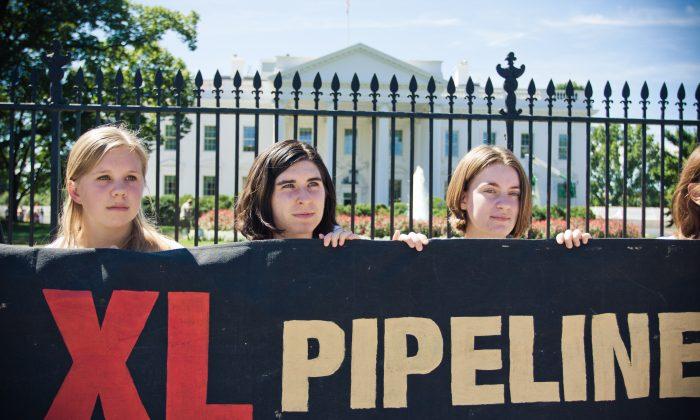Security experts have long warned that an unstable climate means an unstable world. Natural disasters, forced migrations and conflicts over dwindling resources are a security nightmare. For years the Pentagon has warned of the risks to national and global security. Last week it released the latest instalment of its Quadrennial Defense Review (QDR) which explains the risks of climate change to security and how the U.S. military will respond.
In security circles, climate change is known as a “threat multiplier.” Conflict isn’t necessarily caused by climate change, but it can tip the scales from a tense situation to a full-blown war. Violent upheavals in Mali, Yemen and Syria illustrates how climate change works behind the scenes to contribute to chaos. When livelihoods are wiped out by rising temperatures or rising food prices make it hard to survive, people have little choice but to revolt. Al Qaeda means a steady paycheque for a farmer who can no longer feed his family. Open revolt against a government is the only option when its citizens can’t afford their daily bread.
For all the talk of lofty ideals during the 2011 Arab Spring (which caught the global intelligence community completely off-guard), studies now point to rising food prices due to climate change as a major factor. Shots of Egyptian protestors wearing bread loaves as helmets illustrates this critical connection.
Impacts of climate change can lead to many forms of upheaval. Long-standing conflicts between ethnic groups are exacerbated. Institutional weaknesses of governments are exposed. And rising resentments among vulnerable potential terrorists are exploited. I could (and did) write an entire essay about the cascading security risks raised by global warming. But the biggest takeaway is that as the world warms, the security and intelligence community needs to be prepared for the coming chaos.
Pentagon officials are doing just that. This year’s QDR highlights what the Department of Defense is doing to prepare. One of the biggest direct risks to the U.S. military is its own vulnerability to climate change impacts. In the 2010 QDR, the department identified more than 30 of its military bases worldwide which are already affected by rising sea levels. In the Indian Ocean, for example, the U.S. has a base on Diego Garcia which serves as a logistics hub for its operations in the Middle East. Facilities there lie within a few feet of sea level, and will certainly be swallowed up soon. Strategic infrastructure, weapons systems and training activities are all vulnerable.
Last week’s report announced an assessment on all the military’s installations to asses the impacts of climate change on its missions and operational resiliency, and the development of a plan to adapt. It also highlighted the Department’s efforts at going green with renewable fuels and efficiency gains. It may seem silly until one realizes the U.S. military is one of the biggest users of fossil fuels.
“The impacts of climate change may increase the frequency, scale, and complexity of future missions,” reads the report. “The Department will remain ready to operate in a changing environment amid the challenges of climate change.”
Security analysts and intelligence officers the world over need to put this issue at the forefront of their work. And while world leaders wait to take action, they must realize the immense consequences of this delay. Remember, the international community will be called upon for a humanitarian and military response when the proverbial poop hits the rotating blades.



